REAL BIS2C Lab Practical - WQ23-24 (Ledford, Ward, Rodriguez)
1/420
There's no tags or description
Looks like no tags are added yet.
Name | Mastery | Learn | Test | Matching | Spaced |
|---|
No study sessions yet.
421 Terms
what are rooted/unrooted trees
rooted trees have an outgroup, unrooted trees are trees in which the root has been removed and relationships among taxa are more ambiguous, says nothing about the temporal sequence of these events.
What is monophyletic?
A group of organisms consisting of their MRCA ALL of its descendants
What is a Sister group?
two clades or species that are each other’s closest relatives (the two descendant taxa of a single node)
clade
also is monophyletic
homology
Homology refers to the similarity between species that is inherited from a common ancestor. Homologous traits have a similar structure or function, but they may have different appearances or adaptations. DOESNT HAVE TO BE MCRA
What is homoplasy?
It is convergent evolution or reversal.
Convergence refers to the independent evolution of similar traits in unrelated species. It occurs when different species adapt to similar environmental conditions and develop similar characteristics.
Reversal occurs when a trait that was lost in a common ancestor reappears in a descendant species. Reversals can happen due to changes in the environment or genetic mutations.
what is convergent evolution?
Convergence refers to the independent evolution of similar traits in unrelated species. It occurs when different species adapt to similar environmental conditions and develop similar characteristics.
what is an outgroup?
group that is closely related to ingroup without actually being apart of it
what is congruence/conflict?
what is polytomy?
A node has three or more descendant branches, reflects uncertainty about phylogenetic relationships
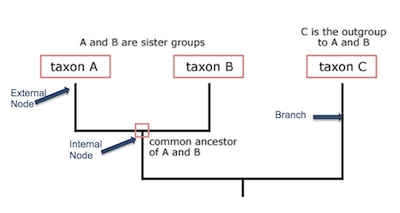
Identify each of these terms on a phylogeny: nodes, roots, taxa, sister
taxa, characters, character states, polytomies, etc.
what is parsimony?
least amount of changes, you add for.. and dont add for…
cladogram
only the relative branching order is depicted, no meaning to branch lengths
phylogram
branch length is proportional to the amount of character change, how much change occured in each branch
what is a chronogram?
branch length is proportional to time
what are the components of a data matrix?
it is a table that includes the taxons, character states for each character, and a summary
what is a paraphyletic?
group of organisms consisting of their MRCA but excluding some of it’s descendants
what does a node represent?
MCRA and speciation
what are characters and character states?
characters → heritable traits or features of organisms
character states → forms of the characters
Lab 1: Station A → Reading a Tree:
Can you interpret the relationships among taxa on a tree?
How does the rotation of nodes affect taxa?
Rotation nodes is fine as long the taxa that were sister to each other remain sister to eachohter.
Lab 1 Station B: Building Trees Using Parsimony:
1. The difference between rooted and unrooted trees
2. Difference between informative, uninformative and variant characters
3. Use parsimony to evaluate character changes on unrooted trees
4. select and root the most parsimonious tree
Parsimony-uninformative characters give us the same number of steps regardless of the tree.
Invariant characters are also uninformative since they are the same across all taxa.
Lab 1 Station C: Identifying Homoplasies:
1. How is homoplasy different from homology?
2. What kinds of similarity might indicate independent (convergent) character evolution? IS MORPHOLOGY AND BEHAVIOR HOMOLOGUS OR HOMOPLACIOUS?
Morphology is usually a homoplasious trait, and so is behaviour.
Lab 1: Station D: Monophyletic Groups and Linnaean Ranks
What is a monophyletic group, how does it relate to taxonomy, and how can they be distinguished from non-monophyletic groups
It relates to taxonomy because researchers tend to only name monophyletic gorups, and the linnean ranking system creates monophyletic gorups.
Lab 1 Station F: Behcaioral Characters in Classification
Can behavioral pattern be a homologous character?
Can behavior be used to infer phylogeny?
Explain what you did at the station:
We observeed annolis, or lizards on three hevaiors and built a phylogeny based off of it.
What is congruent in phylogenies?
IF there is a common branching pattern we say that the characters are congruent.
What is conflict in phylogeny?
If the characters specify a different branching order, we say that they are in conflict.
How would you tell if a character state in a phylogeny was homologus or homoplasious?
If the state wasn’t consistent or in the MCRA, it is probably homoplasious.
What is lateral gene transfer?
the process by which genes are transferred between different species, often unrelated, through mechanisms other than vertical inheritance from parent to offspring. (Conjugation, Trasformation, Transduction)
What is a microbiome?
there is a bit of variation of microbiomes between people, but one’s own microbiome is fairly stable
microbiomes of various body sites are similar in everyone. (skin microbiomes is more similar to another person skin microbiome than your own gut microbiome.)
when microbiomes are classified by the bacterial species they contain, they look very different from person to person
If microbiomes are classified by the presence of various functional capabilities, (ability to digest diff kinds of carbohydrates, syntehsize vitamins, break down toxins) they look more similar from person to person.
What is LUCA?
If all life is related, then we should all have a common ancestor, which is LUCA. (Last universal common ancestor)
note: studies show that LUCA had genes associated with high-temperature microbes.
what are the different shapes for bacterial morphologies?
coccus (spherical), rod (cylindircal), spirillum (spiral)
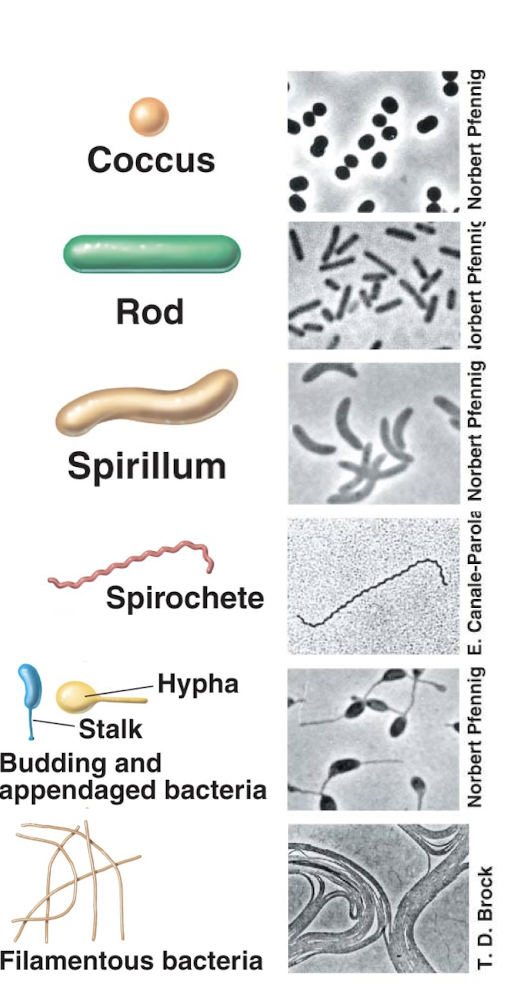
why are microbiomes of various body parts similar between individuals?
shared environmental exposures, genetic relatedness, and LGTr of microbes.
the human body provides similar ecological niches for microbial colonization, leading to similar microbial communities in various body parts.
How does LGT complicate phylogenetic trees? How do we resolve it?
In trees, we might mistake two taxa to be more related/similar, we can use a core set of genes to determine the most-likely phylogeny.
Explain each part of LGT:
Conjugation (bacteria sex)
Transformation (absorb DNA from environment)
Transduction (virus mediated)
How to tell where a gene came from in a new strain of bacteria:
It came from LGT if you can find a different species of bacteria with that same gene
It came from random mutation if you cannot find a different species of bacteria with the gene
What are the characterisitcs of LUCA?
Circular DNA, DNA bases, amino acid codons, 70S ribosome, lipoprotein membrane, ester linkages
What are achaea traits?
Ether linked membranes
methanogenesis
They lack a cell wall
What are bacterial traits?
Peptidoglycan cell wall
Is microbe morphology homoplasious or homologus? (L2A)
Homoplasy, Grouping microbes based on morphology creates polyphyletic groups
Is microbe habitat homoplasy or homologus? (L2A)
Microbe habitat is a homoplasy
Archaea tend to live in ‘extreme’ environments and bacteria tend to live in ‘normal’ environments, but some bacteria are extremophiles and some archaea live in ‘normal’ places
Is Pathogenicity is homoplasious or homologus? (L2A)
In bacteria, pathogenicity independently evolved multiple times in different lineages
Archaea tend not to be pathogens because there are few organisms living in their extreme habitats
Eukaryotes and Microbes and their metabolic classes:
Microbes possess a diverse set of metabolic classes
Eukaryotes are much more limited in their metabolic classes
What are traits of Eukaryotes?
Linear chromosomes, larger ribosomes, mitosis, and a nucleus
Is Archaea a monophyletic, paraphyletic, or polyphyletic group?
Paraphyletic, it excludes eukaryotes which descended from archaea.
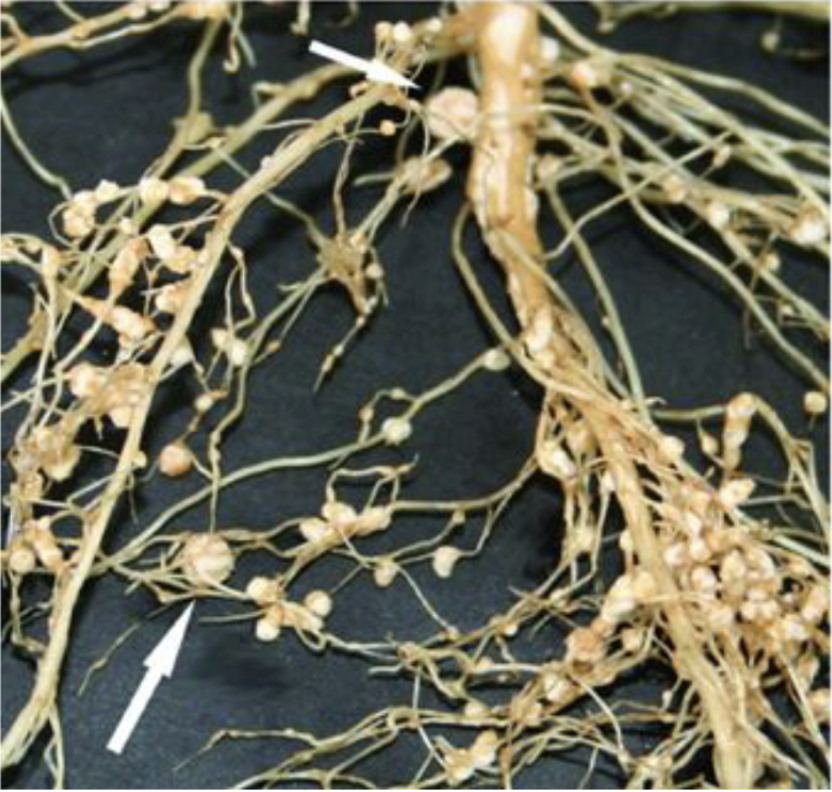
What is rhizobium?
They are bacteria that provide plants with nitrogen
What is anabaena? what kind of organism contains it?
Azolla is a water fern that contains Anabaena
Anabaena fix nitrogen for the fern and are multicellular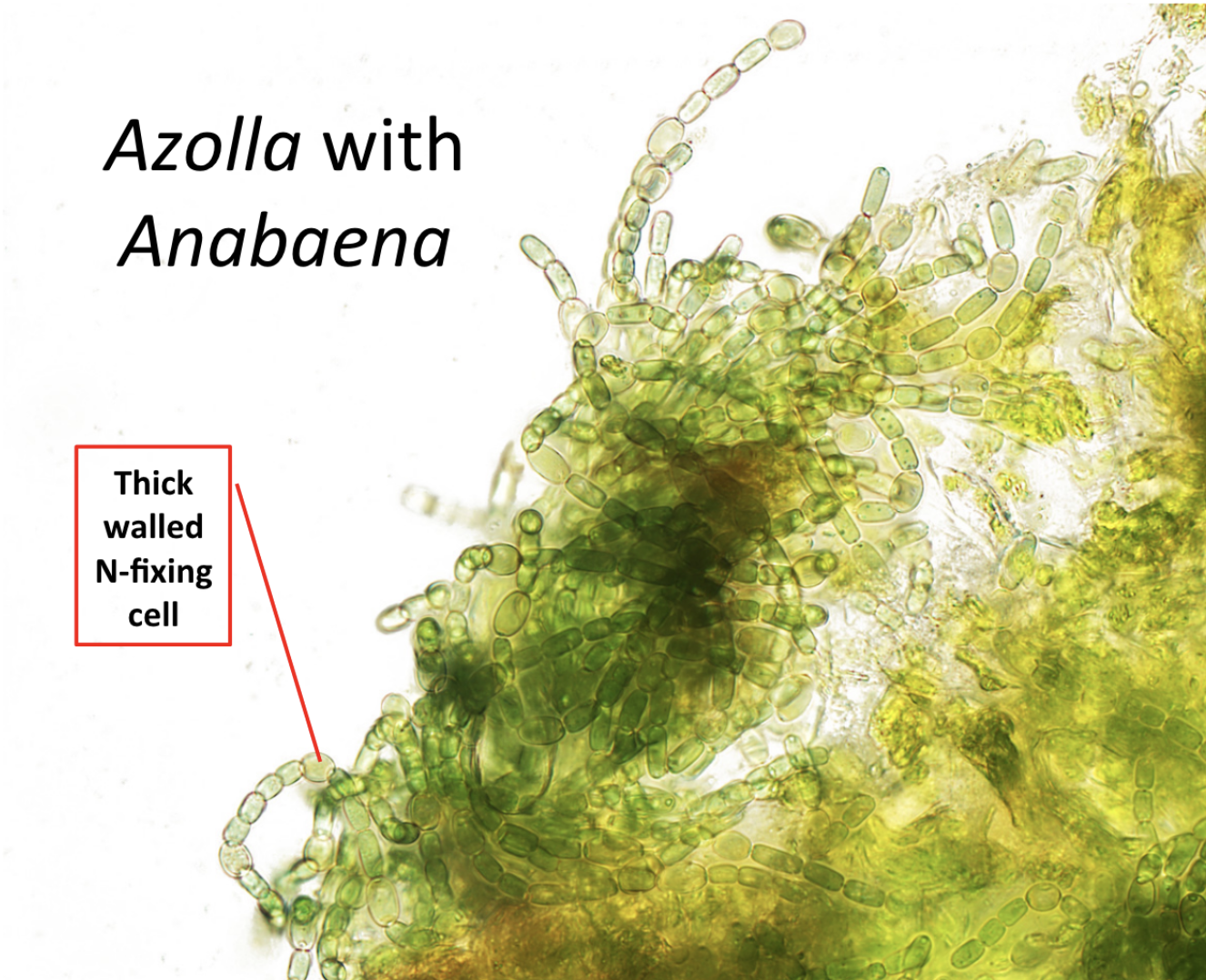
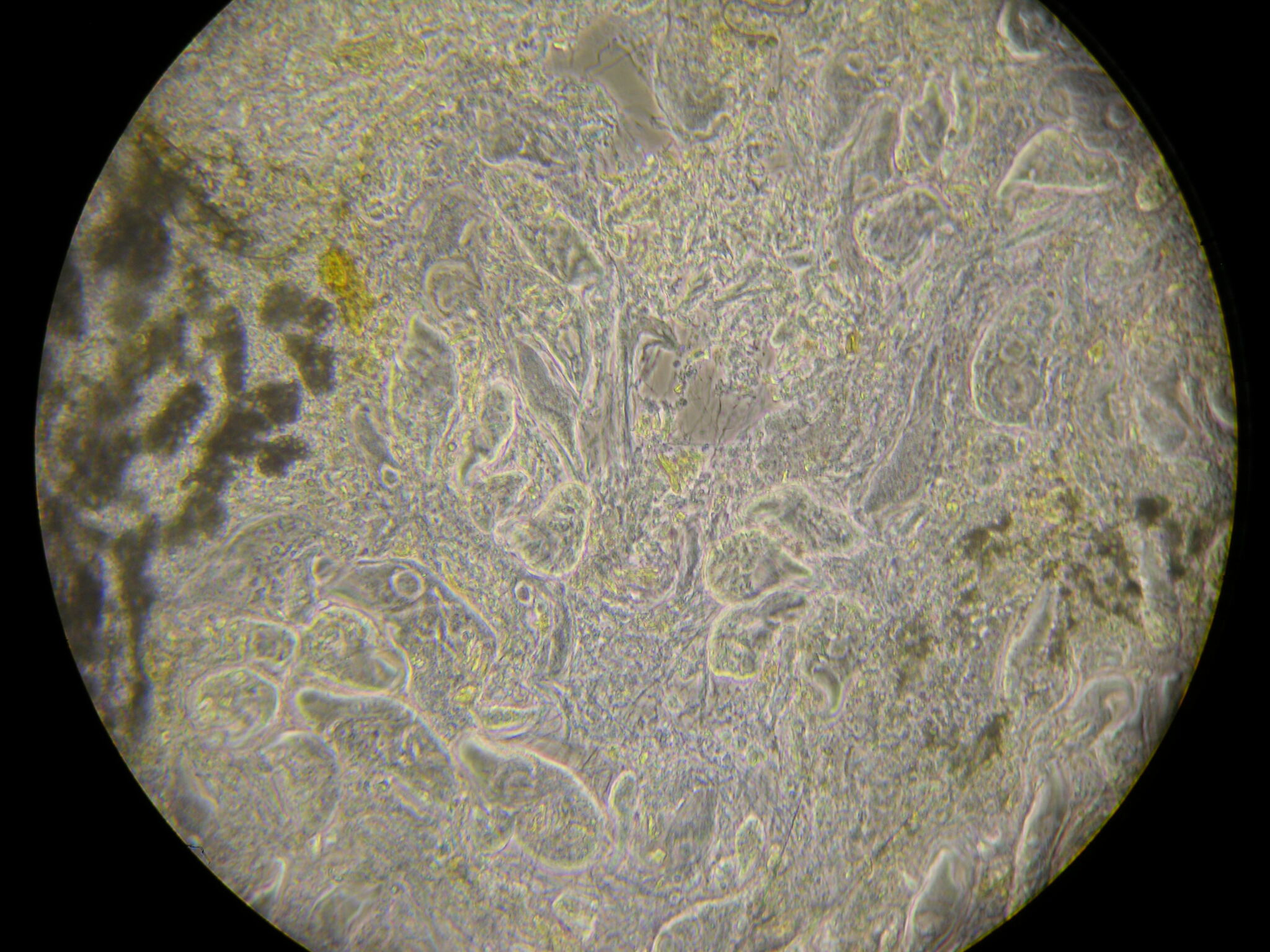
What is a Termite Hindgut?
The ciliated microbial eukaryotes can be seen under normal light
The archaea can be seen under UV light
These produce the cellulases needed to break down cellulose
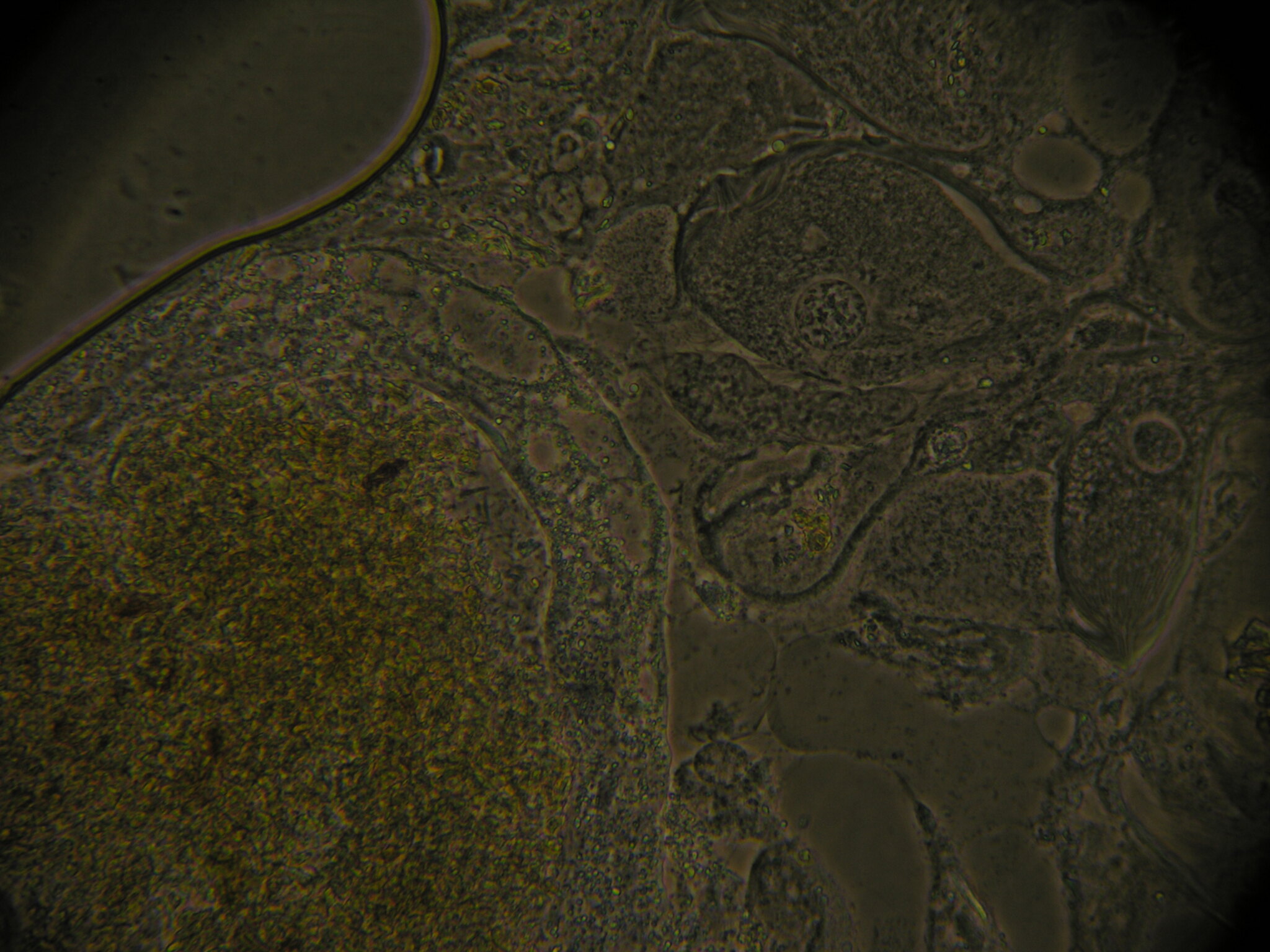
Name each part of the microscope:

What is the column for microbes? (L2F)
The column for the microbes works like this:
O2 is common near the top and not the bottom
Organisms at the top are photosynthetic and/or aerobic heterotrophs Organisms at the bottom tend to be obligate anaerobes, cannot tolerate oxygen Aerotolerant anaerobes cannot use oxygen but can tolerate oxygen
Facultative anaerobes can use O2 if available but otherwise don’t need it
The secondary metabolites of microbes in one layer are used by the microbes in the layer below ● This is known as syntrophy
What are obligate anaerobes?
cannot tolerate oxygen
What are Aerotolerant anaerobes
cannot use oxygen but can tolerate oxygen
What are Facultative anaerobes?
can use O2 if available but otherwise don’t need it
How are microbes found and how is it beneficial (think great plate anomaly)
Using Metagenomics; This eliminates the need to culture microbes, allowing research to be done despite the “Great Plate Count Anomaly” being a thing
What are the three forms of movement?
Amoeboid, ciliate, flagellate
What is Phase contrast, how do you do it and why?
This allows you to view transparent parts of a living specimen under a microscope without using stains
Stains normally kill specimens.
You need to move the filter wheel to Ph1 and replace one of the eyepieces with the phase contrast telescope
what is primary endosymbiosis
evolution of mitochondria and orgin of chloroplasts from proteobacteria and cyanobacteria respectively. eukaryote with a bacterium
what is seconday endosymbiosis?
non plantae Eukaryotes w/ no chloroplasts + plantae Eukaryote w/ chloroplasts (also has mitochondria and nucleus)
what is tertiary endosymbiosis
A non-Plantae eukaryote can do photosynthesis by endosymbiosis with a non-plant photosynthetic eukaryote.
Plasmodial vs cellular slime mold
Cellular slime molds: individual motile cells that form multicellular fruiting structures
Plasmodial slime molds: single cell with many nuclei. They move by amoeboid motion, and they form spores on fruiting bodies with stalks
Explain how to do distance matrix:
explain the setup and results of the Naegleria experiment
How to use a distance matrix to determine the distance between two taxa:
What were the results of the naegleria experiment?
The amoeboid form is common when food is present, but decreases as time goes on without food
The non amoeboid form is used to travel to a new environment where there is ample food
What is the orgin of the nucleus, mitochoondria nad chloroplast?
nucleus: unknown
mitochondria: alpha proteobacterium
chloroplat: cyanobacteria
Evidence of endosymbiosis:
Organelles reproduce via binary fission
Ribosomes in organelles resemble bacterial ribosomes
Cells cannot reproduce organelles if they are removed/destroyed
What is a Diplontic life cycle
expansion of diploid phase only, the only haploid cells are the gametes. The organism is diploid, and the only haploid stage are gametes.
What is a Haplontic life cycle, explain it
only diploid cell is the zygote generated through fertilization.
Sperm and egg fuse to make diploid zygote, produced by mitosis
Four cells or zoospores produced by meiosis, is haploid
adult stage/ gametophyte is haploid by mitosis, produces the sperm and egg by mitosis
Explain the process of alternation of generations:
Sporophyte (2n) → spores (n) by meiosis → gametophyte (n) by mitosis→ gametes, sperm and egg (n) by mitosis → zygote (2n) by fertilization → sporophyte (2n)
What is the gamteophyte?
They produced gametes, and the sperm must swim through water to reach egg.
What kind of sporophyte and gametophyte do vascular plants have?
They have a dominant sporophyte that has complex branched growth in seedless vascular plants, the gametophyte is small and lives independently.
What are sporangia, what’s a cluster of sprangia?
Spore producing structures, and contain spores that develop into gametophytes via mitosis. A linear cluster of sporangia is called a strobilus (cone)
What is the ploidy of spores and gametophytes?
n or haploid.
What are gamentangia?
Archegonia and Antheridia
What do archegonia and antehridida produce?
Archegonia produce eggs and antheridia produce sperm
When were archegonia and antheridia lost?
Archegonia were lost in angiosperms, and antheridia were lost in seed plants
What is sporangium?
Holds the spores, angium → house/container
What do sporophyte produce?
Spore that are resistant to desiccation because of sporopollenin
What are sori?
present under ferns, are the spores
What are vascular tissues?
They are made up of xylem and phloem, they transport water, minerals and sugars
What is a waxy cuticle?
helps from descciation
What are the two types of leaves?
megaphylls and microphylls
What are megaphyls?
the large, highly vascularized leaves that you are most familiar with; they are the primary organs of photosynthesis.
What are microphylls?
leaves that have a single bundle of vascular tissue, sporangia and are a synapomorphy of lycophyes.
Stem Vs. Leaf Vs. Root
parts of a leaf: midrib, petiole, blade
stem: nodes, internodes
How is water and sugar transported?
sugar flows from the source (leaves) to the companion cell, to the phloem to the companion cell to sink (fruit?) using ATP and is bidirectional, the movement from water creates a temporary high pressure to balance the high concentration of sugars.
water flow is unidirectional from root to shoots and requires no atp because of the xylem being dead(it’s like a straw), adhesion/cohesion, and evapotranspiration
What parts of plants are determinant, and which are indetermiant? why?
Stems have indeterminate growth, but leaves do not. This is because stems have nodes with meristems
what are the components of xylem and phloem?
tracheids and vessel elements are in xylem.
vessel elements evolved in angiosperms and gnetophytes. They are larger and connected end-to-end.
phloem → sieve tube and companion cell
what are the differences between eudicots and monocots in terms of seed, stem, leaf veins, flower and pollen?
Monocots have one cotyledon, Eudicots have two coryledons (seeds)
Monocots have scattered vascular bundles loss of BVC, eudicots have ordered vascular bundles for BVC. (Stems)
Monocots have parallel leaves, eudicots have netted leafs. (Leaf)
Monocots flower parts multiple of 3, eudicots, 4 or 5.
Monocots pollen is monosulcate (usually) and eudicots are triculate.
What is Bifacial Vascular Cambium? (BVC)
found in the stems and roots of woody plants.
gives rise to secondary xylem and phloem, secondary growth, and only in eudicots and gymnosperms.
It's the layer inbtw the xylem and phloem. plohem will grow outwards, and xylem inwards
What happens to secondary xylem in spring and winter?
In spring, secondary xylem cells have a large diameter and are less lignified. In winter, the cell diameter is smaller and more lignified. This alternation in growth leads to seasonal growth rings. Water produces more xylem cells.
What do most bryophytes have?
rhizoids; multicellular extensions of the gametophyte used for water absorption and anchoring.
Which of the two, vascular and non vascular plants, are gametophyte or sporophyte dominant?
Vascular: Sporophyte Dominant
NonVascular: Gametophyte dominant
what are the three weird wacky taxa that are out of place and why?
selaginella: heterospory
hornworts : has a persistently green sporophyte with indeterminate growth biggest sporophyte and can do its own photosynthesis
gnetophytes: hey have vessel elements and a variation of double fertilization
what is sporophyll?
Sporophylls are leaves that contain sporangia
Ferns have these leaves
what is homospory
same size spores
what is heterospory?
two sizes of spores, two gametophytes
explain heterospory:
Heterospory is a modification of the plant life cycle where there are two sizes of spores. Each size of spore develops into a different gametophyte.
Sporophyte (2n) → microspores or megaspores (n) by meiosis → microgametophyte (sperm), megagametophyte (egg) (n) by mitosis, zygote by fertilization back to sporophyte.
describe the seeds of angiosperms and gymnosperms
Difference in ploidy and origins:
In gymnosperms, the nutritive tissue is the remains of the megagametophyte (n).
In angiosperms, the nutritive tissue is the result of double fertilization and is the endosperm (3n). They also have an ovary wall with ploidy 2n.
explain the parts of a flower:
What is pollination syndrome? Explain each animal (Moth, Hummingbird, fly and bee)
Flower morphology is optimized to attract a specific pollinator
Hummingbird: red, has no landing pad, and has lots of nectar. The flower has a long tube
Moth: white, a sweet fragrance, and a long tube
Bee: landing pad, lots of nectar
Fly: a motted, and strong odor